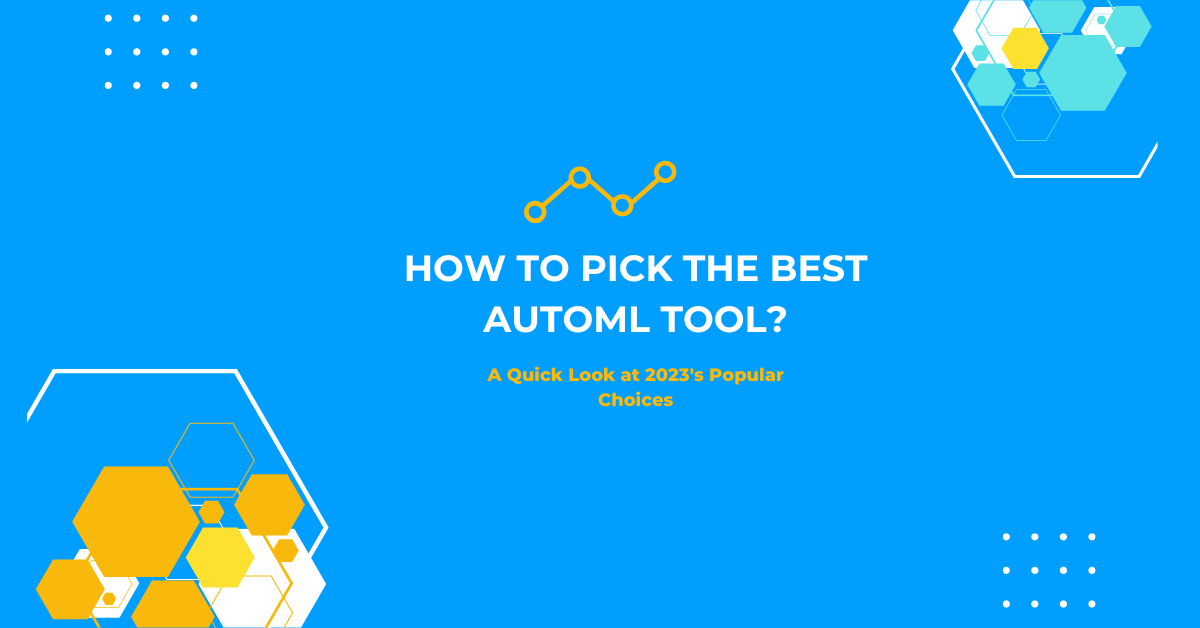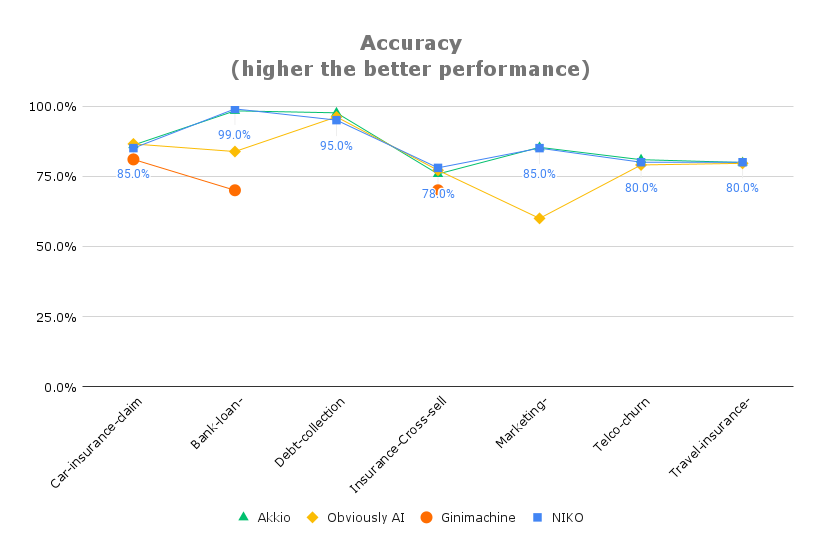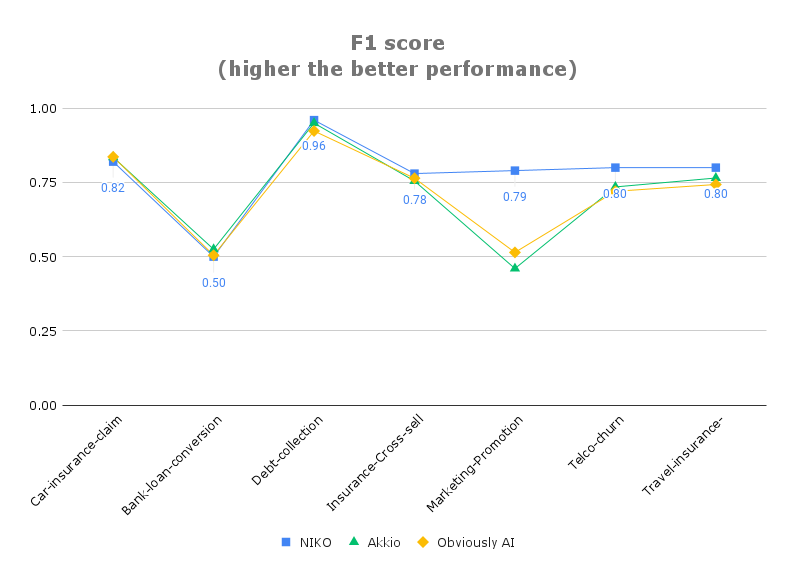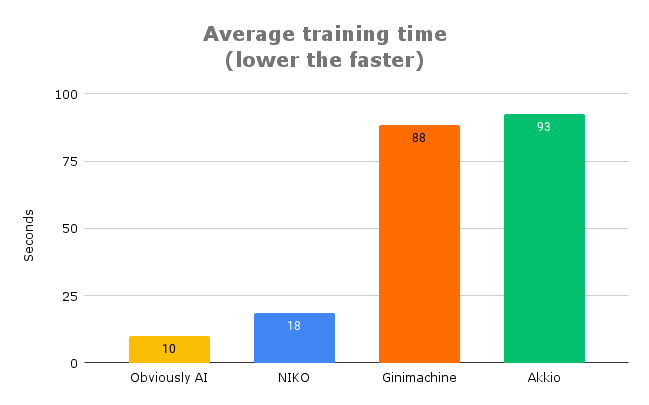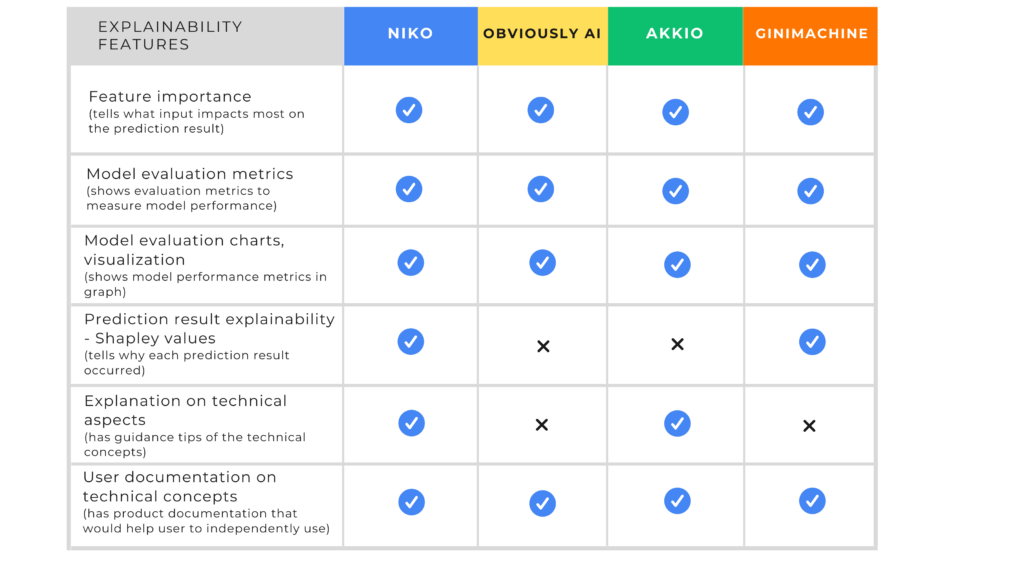Machine learning projects have become increasingly widespread in various industries. In 2022, IBM said that 35% of businesses are using AI. However, there is still a big gap in implementing the machine learning model to the business as It requires a lot of time, resources and professional skill. That’s where AutoML (Automated Machine Learning) comes in as a facilitator, simplifying the adoption of AI in business settings.
If you’re new to this, picking the best AutoML tool can be tough. With emerging AutoML platfroms like NIKO, Obviously AI, Akkio, and Ginimachine, it can be challenging to choose one without a clear understanding of the key factors involved in selecting the most suitable AutoML solution.
This article will delve into the key factors to consider when choosing an AutoML platform and comprehensively compare these four platforms.
Note: All four platforms offer free trials, and the experiment is based on free trial features.
Key Factors to Consider When Choosing AutoML
There are several essential factors to consider when choosing AutoML.
Flexibility: Consider the platform’s ability to handle different types of machine learning tasks and accommodate various use cases. Look for AutoML platforms that offer a wide range of modeling options, such as binary classification, multi-class classification, regression, and more.
Accuracy: The ability of the AutoML platform to generate accurate and high-performing models is crucial. Look for platforms with proven track records of producing reliable predictions and achieving desirable performance metrics.
Explainability and Interpretability: The transparency of the model’s decision-making process is becoming increasingly important, particularly in regulated industries. Look for AutoML platforms that provide clear explanations and insights into how the models arrive at their predictions.
Monitoring and continuous cycle: The ability to continuously monitor the performance of the machine learning model in real-time. Monitoring enables identifying and addressing issues like model drift or degradation, ensuring ongoing model effectiveness.
Integration and Deployment: Consider the platform’s compatibility with your existing technology stack and data infrastructure. It should offer seamless integration with your preferred tools and support different deployment options, such as cloud-based, on-premises, or hybrid solutions.
Comparing emerging 4 AutoML platforms
We will compare NIKO, Obviously AI, Akkio, and Ginimachine AutoML platforms based on three key aspects of AutoML: Flexibility, Accuracy, and Explainability. These factors form the core foundation of a successful AutoML solution and play a crucial role in determining the suitability and effectiveness of the platform.
1) Flexibility
For AutoML, having the capability to apply for various use cases by broad model type is an important factor. The comparing 4 AutoML platform has different model capabilities mentioned as following:
- NIKO AutoML platform can build classification models (binary and mutli-class), and regression models.
- Obviously AI can build classification models (binary and mutli-class), and regression, time series and clustering models.
- Akkio can build classification models (binary and mutli-class), and regression, and time series models.
- Ginimachine can only build binary classification model.
2) Accuracy and Performance
We tested the AutoML platforms with seven open-source datasets. The resulting models’ performance was benchmarked on accuracy, F1 scores, and training time.
Accuracy
Accuracy is simply how often a machine learning algorithm correctly predicts outcomes based on the validation dataset. We found overall NIKO’s accuracy performance is similar to or better than other platforms.
However, accuracy alone has limitations, especially when dealing with imbalanced datasets. Thus, we need to look at other metrics to evaluate the model’s performance.
F1 score
One of the best metrics to evaluate the model performance is the F1 score. It is a good measurement when the target column’s class distribution is imbalanced. A higher F1 score indicates fewer wrong outcomes (false positive and false negative).
The three AutoML result shows generally similar F1 score on each dataset.
Training Time
AutoML streamlines and automates various time-consuming steps in the machine learning workflow, allowing users to quickly experiment with different models. This speed and efficiency make it an attractive option for rapid prototyping and scaling ML solutions. It is good to mention that all 4 AutoML platform train models within 2 minutes.
3) Explainability
Explainability in ML models refers to the ability to understand and interpret how a model arrives at its predictions or decisions. It provides transparency and insights into the inner workings of the model, allowing stakeholders to comprehend the factors that contribute to specific outcomes. You want enough information, and it should be easy to understand.
Here are typical methods for demonstrating explainability and the specific capabilities each AutoML platform provides.
Conclusion
In conclusion, selecting the right AutoML platform requires a careful evaluation of various factors. While all these tools have their strengths, NIKO stands out in terms of explainability. We encourage readers to explore NIKO’s capabilities through its free trial period and experience its potential in driving successful machine learning initiatives.
Reference: IBM’s study can be found here.

